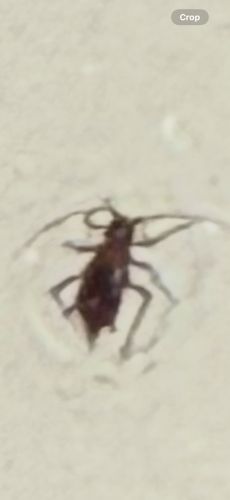Booklouse
Scientific Name: Liposcelis spp.
Order & Family: Psocoptera, Liposcelididae
Size: 1-2 mm

Natural Habitat
Damp, warm, and dark places such as stored food products (grains, cereals, flour), books, paper, wallpaper, furniture, and under bark or leaf litter. They thrive in high humidity conditions.
Diet & Feeding
They feed on molds, fungi, starches, glues, various plant and animal materials, and dried food products. They are scavengers.
Behavior Patterns
Booklice are small, soft-bodied insects that are typically wingless, though some species may have wings. They are nocturnal and avoid light. They can multiply rapidly in favorable conditions. They do not bite or transmit diseases but can be an indicator of high humidity and mold growth.
Risks & Benefits
Potential risks include contamination of stored food products and damage to books and paper by feeding on starches and glues. They can also exacerbate allergies in sensitive individuals due to their presence and fecal matter. There are no known direct benefits to humans, though in their natural habitat (outdoors), they play a role in decomposition.
Identified on: 10/4/2025